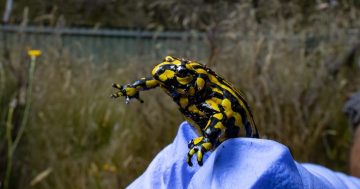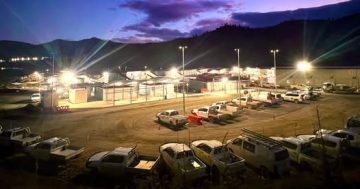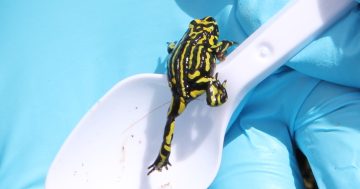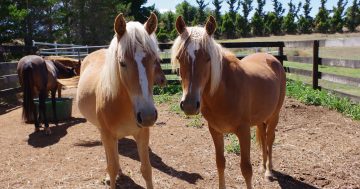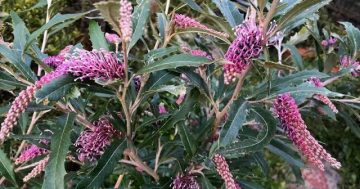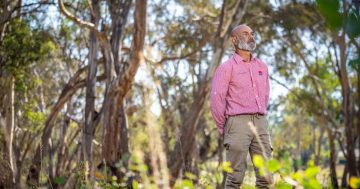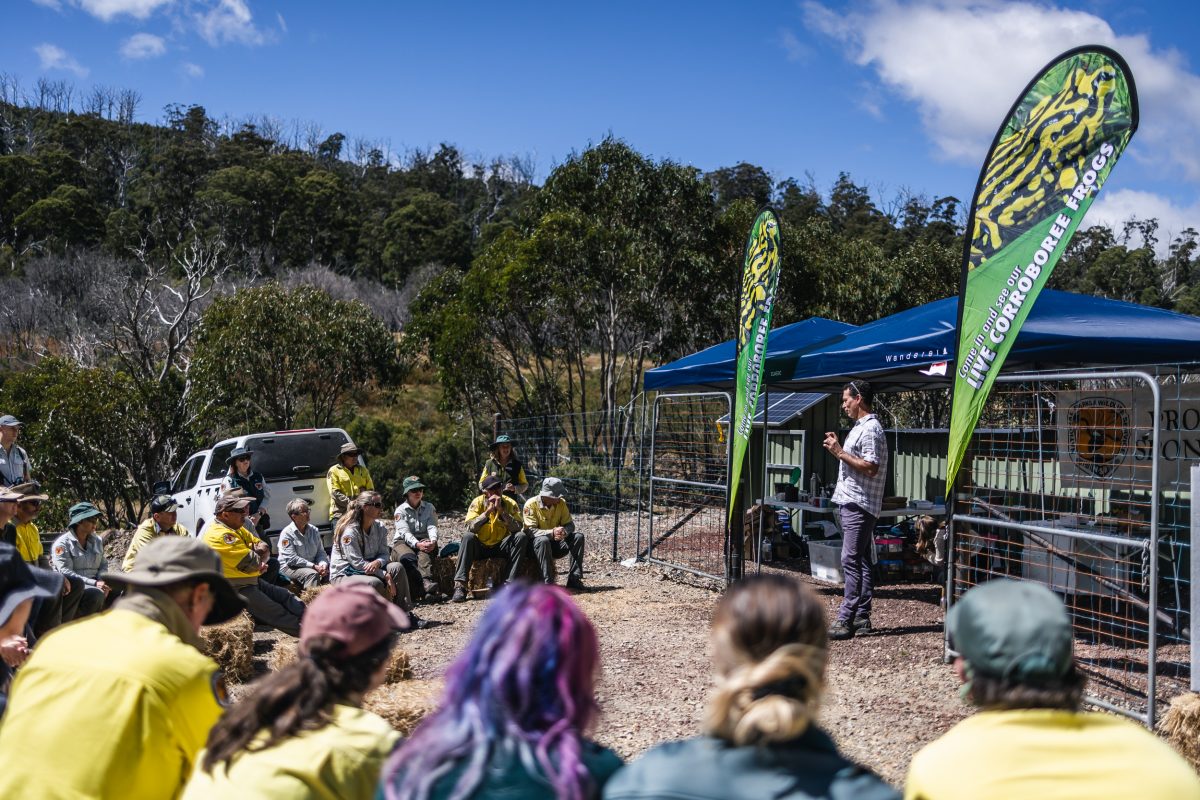
National Parks and Wildlife Service staff, including Aboriginal rangers, release Corroboree Frogs in Kosciuszko National Park. Photo: NPWS.
A project to connect Aboriginal communities with Country is also helping to conserve three critically endangered species, the Tumut Grevillea shrub and the Southern and Northern Corroboree Frogs.
The ”Buugang Wambal” project in Tumut and the Snowy Mountains is one of nine programs in NSW contributing to the understanding of how ecosystems can be improved when Aboriginal people are involved in looking after traditional lands.
The local Aboriginal community had identified the Southern and Northern Corroboree Frogs as culturally significant but many had never been able to see the critically endangered amphibians in their natural habitat of the sphagnum bogs and wetlands in Kosciuszko National Park (KNP).
The project, by the Department of Planning and Environment’s Cultural Fire Management Unit and Saving Our Species program, is helping conservation efforts by maintaining and improving large enclosures for the frogs in the Khancoban area of KNP after previous enclosures were threatened by bushfire. The project is assisting with the release of juvenile frogs bred at Taronga Zoo, and monitoring and surveying the frog population.
The project is also helping to save the Tumut Grevillea by collecting seeds around Tumut and testing how the plants and seeds react to low-heat traditional burning led by traditional owners. It will also investigate whether cultural burning around the frog enclosures could protect frogs from larger bushfires.
Two coordinators are leading a project group of up to 25 Walgalu and Wiradjuri adults and 10 children, with support from organisations including Aboriginal Affairs NSW, the Department of Regional NSW and the Rural Fire Service.
Minister for Lands and Property Steve Kamper said: “The Buugang Wambal project is connecting and teaching young people about traditional Aboriginal culture while supporting the protection of endangered animal and plant species.
“The program has brought young people to see Northern Corroboree Frogs in their High Country landscape and hear the Corroboree Frog story from their elders, and with this traditional knowledge they have been keen to continue their age-old cultural custodianship of the frog and its habitat.”
Minister for the Environment Penny Sharpe said the Corroboree Frog was close to extinction and the iconic and culturally significant NSW species would be lost forever without intervention.
“The collaboration between Saving our Species, the NSW National Parks and Wildlife Service (NPWS), Taronga Zoo, Zoos Victoria, and the Walgalu and Wiradjuri traditional owners makes their survival possible,” she said.
“Working closely with First Nations people is key to recovering threatened species such as the Corroboree Frog.”
Joint project coordinator Megan Considine said: “The group is also imparting culture through visits to the caves in Kosciuszko National Park around Mt Jagungal and Bogong Peaks Wilderness Area, where Aboriginal ancestors collected migrating Bogong moths.
“Our people used to call out to the Corroboree Frog, or gyak, when they came to the High Country and if the frog called back they could continue on through Country to their ceremony grounds, so being able to save the frogs and improve the habitat is very important to us.”








